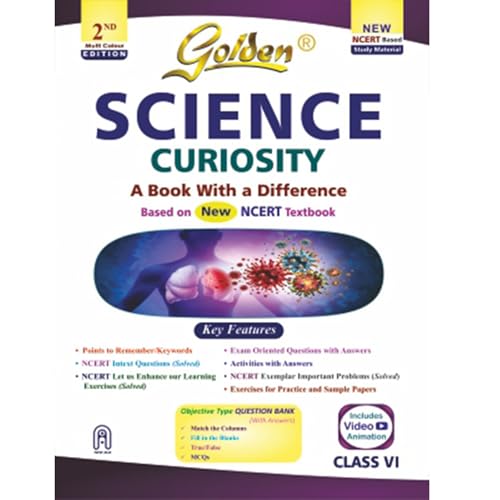In this class 6 science chapter 11 Nature’s Treasures, we join Bhoomi and Surya as they spend their vacation in a peaceful village near a forest. There, their grandmother (Ajji) helps them discover the hidden treasures of nature—clean air, fresh water, bright sunlight, green forests, fertile soil, and useful rocks and minerals.
These natural resources are very important for all living beings. We depend on them for survival and comfort. But as we use these resources, we must also learn how to take care of them, use them wisely, and keep them safe for future generations.
Have you ever wondered where we get the things we use every day—like the air we breathe, the water we drink, or even the food we eat? Nature provides us with everything we need to survive and live comfortably—clean air, water, sunlight, fertile soil, forests, rocks, and minerals.
Nature’s Treasures
What You Will Learn
- Understand different types of natural resources.
- Learn about renewable and non-renewable resources.
- Discover how nature supports life through air, water, forests, and the Sun.
- Explore ways to conserve resources and reduce pollution.
Download our Nature’s Treasures worksheet today and get ahead in competition.
Also download:
Class 6 Hindi Worksheet with Answers
Science Worksheets for Class 6
Ganita Prakash Class 6 Solutions
Nature’s Treasure Class 6 Notes
Air
Air is all around us and is essential for survival.
Oxygen in the air is needed for breathing by humans and animals.
Composition of air:
- Nitrogen – 78%
- Oxygen – 21%
- Other gases (argon, carbon dioxide, etc.) – 1%
Moving air is called wind:
Gentle wind = Breeze
Strong wind = Storm
Uses of air: Breathing, drying clothes, generating energy (windmills), etc.
Water
- Water is needed for: Drinking, cooking, washing, irrigation, industry.
- Sources of water: Rivers, lakes, ponds, underground water.
- Only a small fraction of freshwater is usable.
Water conservation methods:
- Fixing leakages
- Using water efficiently
- Rainwater harvesting
- Reusing/recycling water
Pollution from garbage and chemicals harms water bodies.
Traditional water harvesting systems: Bawadis (Rajasthan), Vavs (Gujarat)
Energy from the Sun
- The Sun is the main source of energy on Earth.
- Helps plants make food (photosynthesis).
Used for:
- Drying clothes and food
- Cooking (solar cookers)
- Heating water (solar heaters)
- Generating electricity (solar panels)
- All life on Earth indirectly depends on the Sun for energy.
Forests
Forests are dense areas filled with trees, shrubs, and herbs.
Provide:
Food and shelter to animals
Products like fruits, wood, medicine, etc.
Forests help:
Prevent soil erosion
Recycle nutrients
Van Mahotsav is celebrated in July to raise awareness about forests.
Chipko Movement: A famous forest conservation effort in India.
Soil, Rocks and Minerals
- Soil is formed from the breaking of rocks over a long time.
- Supports plant growth and holds nutrients.
- Earthworms help in loosening and enriching soil.
- Rocks are used for building and making tools.
- Minerals from rocks are used in electronics, construction, etc.
Fossil Fuels
Examples: Coal, petroleum, and natural gas
Formed from ancient plants and animals over millions of years.
Used for:
Cooking, transport, electricity generation.
Burning fossil fuels causes air pollution.
CNG (Compressed Natural Gas) is a cleaner fuel.
Renewable and Non-renewable Resources
- Natural resources: Provided by nature (air, water, forests, etc.)
- Human-made resources: Created by humans using natural resources (machines, furniture, etc.)
- Renewable resources: Replenish naturally (air, water, sunlight)
- Non-renewable resources: Take millions of years to form (coal, oil, minerals)
Responsible Use of Resources
- We use natural resources daily—water, soil, air, energy, etc.
- We must reduce, reuse, and recycle to conserve them.
- Practice sustainable habits like:
- Using bicycles/public transport
- Reducing water and electricity use
- Planting trees
Class 6 Science Ch 11 Question Answer
Q1. What is the composition of air?
Ans. Air is a mixture of gases, primarily nitrogen (78%), oxygen (21%), and argon (0.9%). It also contains small amounts of carbon dioxide, water vapor, and other gases.
Q2. What will happen if the amount of oxygen is increased in the air?
Ans. If the amount of oxygen in the air increased significantly, it could lead to rapid oxidation and combustion, making it difficult for life to survive.
Q3. What are the different uses of water in daily life?
Ans. Water is used for drinking, cooking, cleaning, bathing, agriculture, and industrial processes.
Q4. What is the primary use of solar panels?
Ans. The primary use of solar panels is to convert sunlight into electricity.
Q5. What is soil?
Ans. Soil is a mixture of minerals, organic matter, water, and air. It is formed by the weathering of rocks and the decomposition of organic matter.
Q6. What happens to trees in the Chipko Movement?
Ans. In the Chipko Movement, people hugged trees to prevent them from being cut down.
Q7. How are rocks important in construction?
Ans. Rocks are used in construction for building houses, roads, bridges, and other structures.
Q8. Write two ways to reduce the use of fossil fuels in daily life.
Ans. Two ways to reduce the use of fossil fuels are by using public transportation and conserving energy






